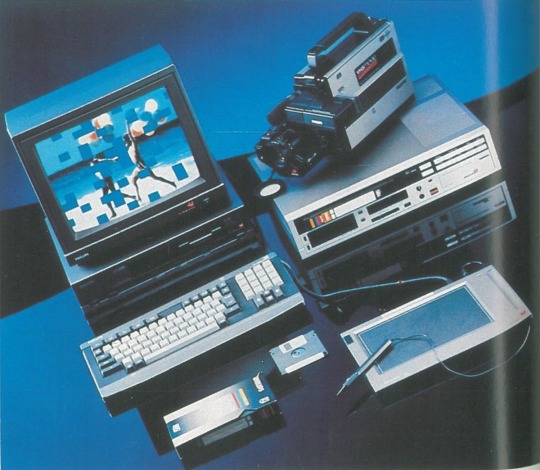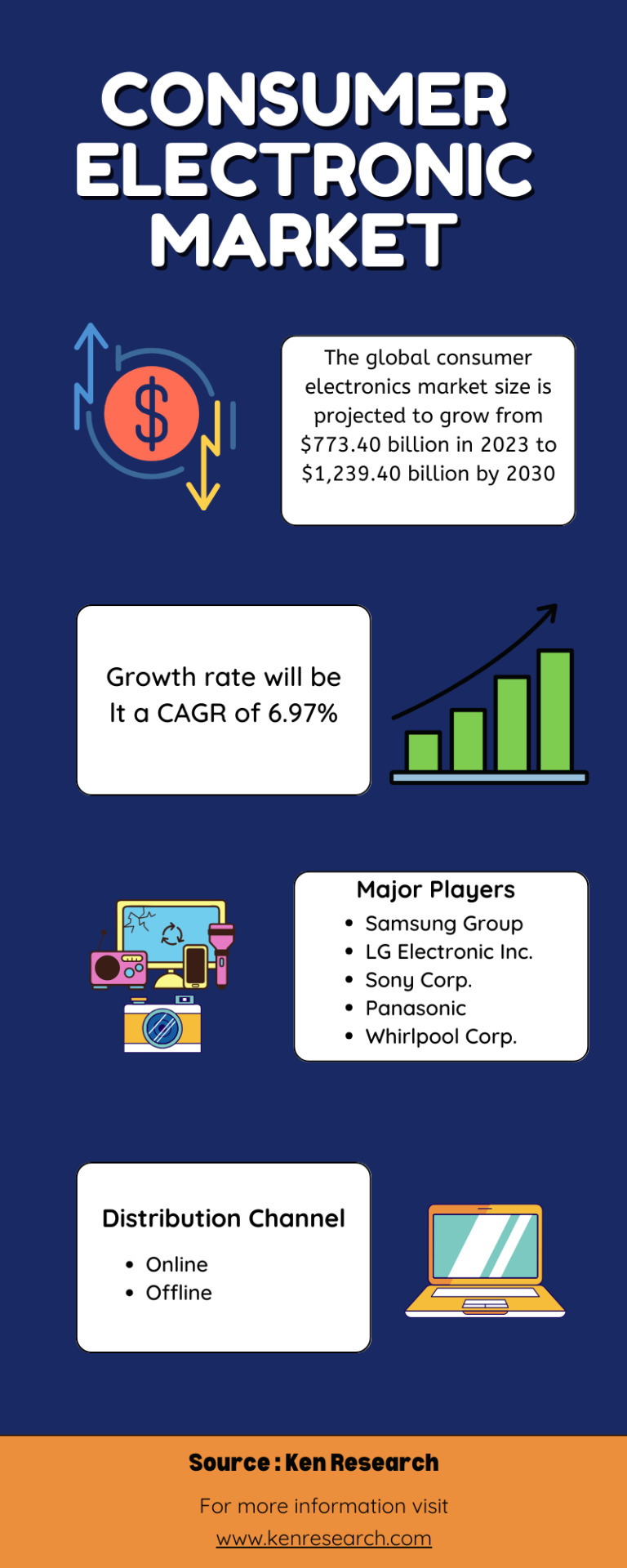#computers/consumer electronics
Explore tagged Tumblr posts
Text

USA 1993
27 notes
·
View notes
Text

Adding another wrinkle to the "on what date did Tron actually take place?" confusion: When Dillinger talks to the MCP at the beginning on the film, there's the following exchange:
MCP: "Hello, Mr. Dillinger. Thanks for coming back early."
Dillinger: "No problem, Master C. If you've seen one consumer electronic show, you've seen them all. What's up?"
The Consumer Electronics Show, or CES for short, has been running annually at different venues since 1967. If we assume that Tron is set in the year 1982, then the CES of that year was held in Chicago on June 3-6 (it was where the Commodore 64 was shown for the first time!). So if it's this particular "consumer electronic show" Dillinger is referring to, presumably the film would take place in early June?
(Of course, it would be easy to simply say that in the movie universe, CES was held at a different date that year.)

(CES 1982 photos by Alan Light)
#Tron#tron 1982#CES#Consumer Electronics Show#computer history#Ed Dillinger#I hope Dillinger got to play the Vectrex before he had to leave early
38 notes
·
View notes
Text
genuinly think pretty much every design decision m for the iphone E was made to get people to talk about it. what a nonsense product. these ewaste companies are rotting my brain. i wish consumer electronics was not my area of expertise. i wish i didnt repair this shit for work. i wish i didn’t give a shit
#these are dark times for computer fuckers#actually for specifically consumer electronics fuckers#like me
11 notes
·
View notes
Text
Elaine Liu: Charging ahead
New Post has been published on https://thedigitalinsider.com/elaine-liu-charging-ahead/
Elaine Liu: Charging ahead


MIT senior Elaine Siyu Liu doesn’t own an electric car, or any car. But she sees the impact of electric vehicles (EVs) and renewables on the grid as two pieces of an energy puzzle she wants to solve.
The U.S. Department of Energy reports that the number of public and private EV charging ports nearly doubled in the past three years, and many more are in the works. Users expect to plug in at their convenience, charge up, and drive away. But what if the grid can’t handle it?
Electricity demand, long stagnant in the United States, has spiked due to EVs, data centers that drive artificial intelligence, and industry. Grid planners forecast an increase of 2.6 percent to 4.7 percent in electricity demand over the next five years, according to data reported to federal regulators. Everyone from EV charging-station operators to utility-system operators needs help navigating a system in flux.
That’s where Liu’s work comes in.
Liu, who is studying mathematics and electrical engineering and computer science (EECS), is interested in distribution — how to get electricity from a centralized location to consumers. “I see power systems as a good venue for theoretical research as an application tool,” she says. “I’m interested in it because I’m familiar with the optimization and probability techniques used to map this level of problem.”
Liu grew up in Beijing, then after middle school moved with her parents to Canada and enrolled in a prep school in Oakville, Ontario, 30 miles outside Toronto.
Liu stumbled upon an opportunity to take part in a regional math competition and eventually started a math club, but at the time, the school’s culture surrounding math surprised her. Being exposed to what seemed to be some students’ aversion to math, she says, “I don’t think my feelings about math changed. I think my feelings about how people feel about math changed.”
Liu brought her passion for math to MIT. The summer after her sophomore year, she took on the first of the two Undergraduate Research Opportunity Program projects she completed with electric power system expert Marija Ilić, a joint adjunct professor in EECS and a senior research scientist at the MIT Laboratory for Information and Decision Systems.
Predicting the grid
Since 2022, with the help of funding from the MIT Energy Initiative (MITEI), Liu has been working with Ilić on identifying ways in which the grid is challenged.
One factor is the addition of renewables to the energy pipeline. A gap in wind or sun might cause a lag in power generation. If this lag occurs during peak demand, it could mean trouble for a grid already taxed by extreme weather and other unforeseen events.
If you think of the grid as a network of dozens of interconnected parts, once an element in the network fails — say, a tree downs a transmission line — the electricity that used to go through that line needs to be rerouted. This may overload other lines, creating what’s known as a cascade failure.
“This all happens really quickly and has very large downstream effects,” Liu says. “Millions of people will have instant blackouts.”
Even if the system can handle a single downed line, Liu notes that “the nuance is that there are now a lot of renewables, and renewables are less predictable. You can’t predict a gap in wind or sun. When such things happen, there’s suddenly not enough generation and too much demand. So the same kind of failure would happen, but on a larger and more uncontrollable scale.”
Renewables’ varying output has the added complication of causing voltage fluctuations. “We plug in our devices expecting a voltage of 110, but because of oscillations, you will never get exactly 110,” Liu says. “So even when you can deliver enough electricity, if you can’t deliver it at the specific voltage level that is required, that’s a problem.”
Liu and Ilić are building a model to predict how and when the grid might fail. Lacking access to privatized data, Liu runs her models with European industry data and test cases made available to universities. “I have a fake power grid that I run my experiments on,” she says. “You can take the same tool and run it on the real power grid.”
Liu’s model predicts cascade failures as they evolve. Supply from a wind generator, for example, might drop precipitously over the course of an hour. The model analyzes which substations and which households will be affected. “After we know we need to do something, this prediction tool can enable system operators to strategically intervene ahead of time,” Liu says.
Dictating price and power
Last year, Liu turned her attention to EVs, which provide a different kind of challenge than renewables.
In 2022, S&P Global reported that lawmakers argued that the U.S. Federal Energy Regulatory Commission’s (FERC) wholesale power rate structure was unfair for EV charging station operators.
In addition to operators paying by the kilowatt-hour, some also pay more for electricity during peak demand hours. Only a few EVs charging up during those hours could result in higher costs for the operator even if their overall energy use is low.
Anticipating how much power EVs will need is more complex than predicting energy needed for, say, heating and cooling. Unlike buildings, EVs move around, making it difficult to predict energy consumption at any given time. “If users don’t like the price at one charging station or how long the line is, they’ll go somewhere else,” Liu says. “Where to allocate EV chargers is a problem that a lot of people are dealing with right now.”
One approach would be for FERC to dictate to EV users when and where to charge and what price they’ll pay. To Liu, this isn’t an attractive option. “No one likes to be told what to do,” she says.
Liu is looking at optimizing a market-based solution that would be acceptable to top-level energy producers — wind and solar farms and nuclear plants — all the way down to the municipal aggregators that secure electricity at competitive rates and oversee distribution to the consumer.
Analyzing the location, movement, and behavior patterns of all the EVs driven daily in Boston and other major energy hubs, she notes, could help demand aggregators determine where to place EV chargers and how much to charge consumers, akin to Walmart deciding how much to mark up wholesale eggs in different markets.
Last year, Liu presented the work at MITEI’s annual research conference. This spring, Liu and Ilić are submitting a paper on the market optimization analysis to a journal of the Institute of Electrical and Electronics Engineers.
Liu has come to terms with her early introduction to attitudes toward STEM that struck her as markedly different from those in China. She says, “I think the (prep) school had a very strong ‘math is for nerds’ vibe, especially for girls. There was a ‘why are you giving yourself more work?’ kind of mentality. But over time, I just learned to disregard that.”
After graduation, Liu, the only undergraduate researcher in Ilić’s MIT Electric Energy Systems Group, plans to apply to fellowships and graduate programs in EECS, applied math, and operations research.
Based on her analysis, Liu says that the market could effectively determine the price and availability of charging stations. Offering incentives for EV owners to charge during the day instead of at night when demand is high could help avoid grid overload and prevent extra costs to operators. “People would still retain the ability to go to a different charging station if they chose to,” she says. “I’m arguing that this works.”
#2022#amp#Analysis#approach#artificial#Artificial Intelligence#attention#Behavior#Building#buildings#Canada#cascade#challenge#China#competition#computer#Computer Science#conference#consumers#cooling#course#data#Data Centers#devices#effects#electric power#electric vehicles#Electrical engineering and computer science (EECS)#electricity#Electronics
2 notes
·
View notes
Text
Pinduoduo: One of China's most popular apps has the ability to spy on its users, say experts
CNN — It is one of China’s most popular shopping apps, selling clothing, groceries and just about everything else under the sun to more than 750 million users a month. But according to cybersecurity researchers, it can also bypass users’ cell phone security to monitor activities on other apps, check notifications, read private messages and change settings. And once installed, it’s tough to…

View On WordPress
#alphabet inc#asia#brand safety-nsf crime#brand safety-nsf online illegal#brand safety-nsf sensitive#business#business and industry sectors#china#companies#computer science and information technology#consumer behavior#consumer electronics#consumer products#continents and regions#crime#criminal offenses#digital crime#digital privacy#digital security#domestic alerts#domestic-business#domestic-international news#east asia#economic indicators#economy and economic indicators#economy and trade#electronics#google inc#iab-business and finance#iab-computing
2 notes
·
View notes
Text
One of China’s most popular apps has the ability to spy on its users, say experts | CNN Business
CNN — It is one of China’s most popular shopping apps, selling clothing, groceries and just about everything else under the sun to more than 750 million users a month. But according to cybersecurity researchers, it can also bypass users’ cell phone security to monitor activities on other apps, check notifications, read private messages and change settings. And once installed, it’s tough to…
#alphabet inc#Asia#brand safety-nsf crime#brand safety-nsf online illegal#brand safety-nsf sensitive#Business#business and industry sectors#China#companies#computer science and information technology#consumer behavior#consumer electronics#consumer products#continents and regions#crime#criminal offenses#digital crime#digital privacy#digital security#domestic alerts#domestic-business#domestic-international news#east asia#economic indicators#economy and economic indicators#economy and trade#electronics#google inc#iab-business and finance#iab-computing
0 notes
Text
Watching Computer Chronicles covering CES 1997 (as you do). 56k Modems the talk of the town! This part just really tickled me though where everyone was trying to figure out hey we have TVs and PCs... we must be able to merge these things. Also watching TV on your PC monitor? That'll never work!
1 note
·
View note
Text
#GPU Market#Graphics Processing Unit#GPU Industry Trends#Market Research Report#GPU Market Growth#Semiconductor Industry#Gaming GPUs#AI and Machine Learning GPUs#Data Center GPUs#High-Performance Computing#GPU Market Analysis#Market Size and Forecast#GPU Manufacturers#Cloud Computing GPUs#GPU Demand Drivers#Technological Advancements in GPUs#GPU Applications#Competitive Landscape#Consumer Electronics GPUs#Emerging Markets for GPUs
0 notes
Text
Wireless Connectivity Market Set to Expand with Key Technological Advancements and Rising Demand Across Industries

Wireless Connectivity Market Opportunities, Size, Demand and Sales by 2032
The global Wireless Connectivity Market is undergoing rapid growth, with a projected valuation of USD 236.52 billion by 2032. The market, valued at USD 80.05 billion in 2023, is forecasted to expand from USD 90.29 billion in 2024, registering a compound annual growth rate (CAGR) of 12.8% during the forecast period from 2024 to 2032. This growth is attributed to the increasing demand for seamless, high-speed, and reliable wireless communication across multiple industries, driven by technological advancements and the rise of connected devices.
Catalysts for Expansion
Several key factors are fueling the expansion of the wireless connectivity market. The proliferation of Internet of Things (IoT) devices, the shift toward 5G networks, and the growing need for reliable wireless communication in sectors such as automotive, healthcare, and industrial automation are among the primary drivers. Additionally, advancements in technologies like Wi-Fi 6, Bluetooth 5.0, and ultra-wideband (UWB) are enhancing the performance, security, and coverage of wireless networks, making them more appealing to both businesses and consumers.
Request a Free Sample (Free Executive Summary at Full Report Starting from USD 1850): https://straitsresearch.com/report/wireless-connectivity-market/request-sample
The widespread adoption of wireless connectivity technologies is not only simplifying the digital transformation process for enterprises but also enabling smart homes, autonomous vehicles, and wearable health monitoring devices. As wireless technology continues to evolve, it is expected to revolutionize industries and enhance overall connectivity worldwide.
Wireless Connectivity Market Segment Breakdown
The wireless connectivity market is segmented by technology, network type, and end-user. Below is an overview of these segments:
By Technology:
Bluetooth: A major player in the short-range wireless communication space, especially for personal devices, wearables, and home automation.
Wi-Fi: Widely used for internet access, Wi-Fi is a core technology in both residential and commercial applications.
Ultra-Wide Band (UWB): A highly precise technology used in applications like indoor positioning systems and asset tracking.
Near Field Communication (NFC): Used for contactless payments and data exchange in consumer electronics and mobile devices.
Cellular: Essential for mobile communication, including 4G, 5G, and upcoming 6G technologies.
Zigbee: A low-power, short-range communication standard used in smart home devices and automation systems.
GPS: Integral for location tracking and navigation systems in automotive and mobile applications.
Others: Other emerging wireless technologies such as LoRaWAN and RFID.
By Network Type:
Wireless Wide Area Network (WWAN): Used for large-scale communication over long distances, including cellular networks.
Wireless Personal Area Network (WPAN): Focuses on short-range communication for personal devices like smartphones, wearables, and laptops.
Wireless Local Area Network (WLAN): Facilitates communication within a localized area, typically in office buildings, homes, or campuses.
By End-User:
Automotive and Transportation: Enabling smart vehicles, connected cars, and vehicle-to-everything (V2X) communication.
Building Automation: Powering smart buildings, energy-efficient lighting, and HVAC systems.
Consumer Electronics and Wearables: Providing wireless connectivity for gadgets such as smartphones, laptops, smartwatches, and fitness trackers.
Energy and Utilities: Supporting smart grids, remote monitoring, and energy-efficient systems.
Healthcare: Enabling telemedicine, remote patient monitoring, and medical device connectivity.
Industrial: Supporting automation, predictive maintenance, and industrial IoT (IIoT) applications.
IT and Telecom: Essential for data transmission and communication infrastructure.
Others: Other sectors such as retail and logistics are also seeing increasing wireless connectivity adoption.Market Segmentation with Insights-Driven Strategy Guide: https://straitsresearch.com/report/wireless-connectivity-market/segmentation
Top Performing Companies in the Wireless Connectivity Market
Several companies are leading the charge in the wireless connectivity market, each contributing to innovation and expansion across various technologies. Among the top-performing companies are:
Intel Corporation
Qualcomm Inc.
NXP Semiconductors N.V.
STMicroelectronics
Texas Instruments Inc.
Microchip Technology Inc.
MediaTek Inc.
Cypress Semiconductor Corporation
Broadcom Inc.
EnOcean GmbH
NEXCOM International Co. Ltd.
Skyworks Solutions Inc.
Murata Manufacturing Co. Ltd.
Marvell Technology Group
These companies play a crucial role in developing and providing cutting-edge wireless connectivity solutions, from chipsets and semiconductors to complete communication modules and systems. Their ongoing innovations in areas like 5G, Wi-Fi 6, and Bluetooth technologies ensure the continued growth and transformation of the market.
Emerging Prospects in Wireless Connectivity
As the demand for wireless connectivity intensifies, several emerging prospects are reshaping the industry landscape. Notably, the rollout of 5G technology is expected to provide faster, more reliable connectivity, fostering the growth of IoT and enabling new applications in areas such as autonomous vehicles, augmented reality (AR), and virtual reality (VR). Moreover, the rise of edge computing and cloud-based applications is generating a need for more efficient and scalable wireless infrastructure.
The increasing popularity of smart homes and smart cities is also driving wireless connectivity solutions, creating opportunities for businesses that offer seamless, secure, and high-speed connections. Furthermore, industries like healthcare and manufacturing are increasingly adopting wireless technologies for remote monitoring, automation, and data exchange, opening new avenues for growth.
Buy Full Report (Exclusive Insights with In-Depth Data Supplement): https://straitsresearch.com/buy-now/wireless-connectivity-market
Industry Movements
The wireless connectivity market is witnessing significant industry movements, including strategic partnerships, mergers and acquisitions, and new product launches. For instance, the ongoing development of Wi-Fi 6 and Wi-Fi 6E technologies is enhancing network capacity and reducing latency, creating opportunities for businesses to provide high-performance solutions. Additionally, the integration of AI and machine learning with wireless communication systems is enabling smarter, more adaptive networks that can better handle the increasing volume of connected devices.
Geographic Analysis
Geographically, North America and Europe are dominant markets for wireless connectivity, driven by advanced infrastructure, early adoption of new technologies, and strong demand from end-user industries like automotive, healthcare, and IT. However, the Asia-Pacific region is expected to witness the highest growth during the forecast period, fueled by rapid industrialization, the rise of smart cities, and the growing adoption of IoT devices.
Data Insights
Straits Research provides comprehensive insights into the wireless connectivity market, including data on current trends, opportunities, and challenges facing the industry. The data reflects key developments and market dynamics, helping businesses and stakeholders make informed decisions about market expansion and innovation.
Table of Contents for the Wireless Connectivity Market Report: https://straitsresearch.com/report/wireless-connectivity-market/toc
About Us: Straits Research is a leading research and intelligence organization specializing in analytics, advisory services, and providing business insights through comprehensive research reports.
Contact Us:
Email:[email protected]
Address: 825 3rd Avenue, New York, NY, USA, 10022
Phone: +1 646 905 0080 (U.S.) | +91 8087085354 (India) | +44 203 695 0070 (U.K.)
#Wireless Connectivity Market#Market Growth 2024-2032#5G and IoT Adoption#Wireless Technology Trends#Smart Home and Wearables#Bluetooth#Wi-Fi#and UWB#Wireless Market Forecast#Global Connectivity Market Analysis#Wireless Networks and IoT#Consumer Electronics Connectivity#Automotive Connectivity#Industrial IoT#Wireless Communication Technologies#Smart Cities#Edge Computing in Wireless#Wi-Fi 6#Ultra-Wide Band (UWB)#Market Opportunities#Wireless Connectivity Solutions#Global Wireless Market Expansion
0 notes
Text
The Right to Repair: Why It Matters for You and Your Devices
In recent years, there’s been a growing movement advocating for the “Right to Repair.” But what does that actually mean, and why should you care? At its core, the Right to Repair is all about empowering consumers like you to have control over the devices you own—whether it’s your smartphone, laptop, or even your car. Let’s dive into what this movement is, why it matters, and how it affects you as…
#Affordable Repairs#Consumer Rights#Device Repair#DIY Repairs#E-waste Reduction#Electronic Waste#Electronics Longevity#Environmental Responsibility#Local Repair Shops#Repair Legislation#Repair Movement#Right to Repair#sustainable technology#Tech Repair#Uvalde Computer Repair
0 notes
Text
Philips in the 80s-90s was in the forefront of revolutionary tech, especially CDs.

_1987_Philips
#retro#technology#science#computers#electronics#consumer electronics#retro tech#vintage electronics#retrocomputing
498 notes
·
View notes
Text
Apple Vision Pro 將於2月2日在美國上市,空間計算時代來臨,預購將於1月19日開始

View On WordPress
#Apple innovations#apple vision pro#Augmented Reality#Consumer electronics#Cutting-edge technology#空間計算娛樂體驗#空間計算應用#空間計算機#Digital innovation#Eye tracking technology#蘋果生態系統#蘋果科技新聞#蘋果VR裝置#蘋果創新產品#蘋果新產品發布#蘋果新品#虛擬現實技術#視覺技術#高性能眼睛追蹤#Future of computing#High-performance wearables#High-resolution displays#Innovative gadgets#Smart devices#Spatial audio experiences#Spatial computing#Spatial computing ecosystem#Spatial computing experiences#Technology trends#virtual reality
0 notes
Text
Not a bold take here, but I believe nevertheless that our current way of producing and consuming electronics (I speak globally here) is not sustainable and built on huge human suffering. On the logistical level, virtually all of the world's microchips are made in a single factory on Taiwan because every single technology company outsourced it to them. Any conflict or disaster could simply stop the delicate supply chains that have their point here and make anything related to microchips, that is, our entire lives become much much harder. It is, in fact, very likely this might happen in our lifetimes and might lead to a major crisis in the first world.
This does not mean that computers or robotics shouldn't get produced anymore because that's a stupid idea by jokers. It means that the world needs to rethink how we make and consume electronics. Stupid fashion items like iphones are only possible because of this system; a tool, like a smartphone is, a very useful tool, shouldn't be needed to be replaced with each new model but endure. Computers should last longer and be upgradeable. I'd even go as far as to say that the power of a device should be proportional to its function; if a rugged brick phone can do the job, it will do the job. The exploitation of African countries for mining cannot continue, any international trade must be done in their terms and with the rights of their workers fully respected, no matter the price the end consumers will have to pay.
This cannot happen in a world where computers are seen as luxuries instead of tools and where capitalism creates demand.
2K notes
·
View notes
Text
Snapdragon X Is Qualcomm's Answer To Apple's M2
Apple’s M2 chip is undoubtedly one of, if not the most powerful chip in a computer. However, the Snapdragon X from Qualcomm looks poised to challenge the M2 for supremacy (via Digital Trends) Snapdragon X Rebrand Snapdragon X will be a rebranding of Qualcomm’s current PC platforms and will roll out in 2024. It isn’t just a name change, though. The Snapdragon X chips will feature Qualcomm’s…

View On WordPress
0 notes
Text
The Future of Consumer Electronics: Market Insights and Forecast

Stay ahead in the ever-evolving consumer electronics market. Explore the latest trends, growth opportunities, and innovative technologies shaping the industry. Be a part of the future of electronics.
#Audio Systems market#Home theater audio market trends#Bluetooth speaker market Size#Wireless audio device market#consumer electronics market#consumer electronics market share#drone camera market#Desktop Computers market#Laptop market size#computer accessories market#smart kitchen appliances market#Microwaves oven market#global air conditioner market#vacuum cleaners market#Lighting industry size#mobile phone market size#smartphone market size
1 note
·
View note
Text
Tech Odyssey 2023: Navigating the Seas of Innovation
Charting a Course Through the Technological Frontier: Provide an engaging introduction that highlights the rapid pace of technological advancements. Mention the importance of staying updated with emerging technologies in today’s world. Section 1: AI and Machine Learning Revolution: Discuss recent developments in artificial intelligence and machine learning. Highlight real-world…

View On WordPress
#AI and Machine Learning5G#AR and VR#Big Data Analytics#Biotechnology#Consumer Electronics#Cybersecurity#Digital Transformation#Emerging Technologies#Future of Work#Gadgets#Health Tech#Innovation 2023#Remote Work#Sustainable Tech#Tech Blog#Tech Education#Tech Investments#Technology Trends#TechnologyQuantum Computing
1 note
·
View note